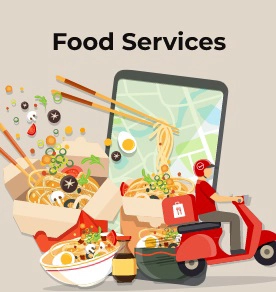From Disruption to Resilience: Redefining Supply Chains and Consumer Experience in a Shifting World

While the supply side grapples with reconfiguration, the demand side has undergone a revolution of its own. According to Goel, consumer expectations have dramatically evolved over the past two decades.
By Vaishnavi Gupta, Associate Editor
Jun 02, 2025 / 14 MIN READ
In a world constantly reshaped by geopolitics, pandemics, and technological shifts, the once-linear pathways of global trade and supply chains are being redefined. The global business ecosystem has been thrust into a whirlwind of uncertainty, yet it is precisely this volatility that has sparked a wave of innovation, adaptation, and localized opportunity. Leaders from industries as diverse as electronics and agriculture have echoed a common sentiment—the need for resilience, decentralization, and technology-driven transformation.
At the forefront of this conversation are industry veterans like Sudhir Goel, Chief Business Officer of Acer India, and Swati Shukla, Head of Food and Farms at Godavari Biorefineries Limited. Their perspectives offer a granular understanding of the macroeconomic shifts, trade realignments, and evolving consumer behaviors that are reshaping India's economic landscape.
The Fragility of Globalization and the New Supply Chain Narrative
Globalization, once hailed as the engine of economic growth, is undergoing a recalibration. As Sudhir Goel pointed out, the pre-COVID era was dominated by economies of scale and centralized production, especially in industries like technology. This approach, while efficient, proved brittle in the face of unexpected disruptions.
“COVID changed the way people started thinking about risks. A majority of supply chains were consolidated in one country—China—and this overdependence was exposed dramatically when the pandemic struck,” said Goel. The need for decentralization, or what many call the “China Plus One” strategy, has gained ground since then.
India, with its abundant labor, improving infrastructure, and growing domestic market, has emerged as a viable alternative manufacturing hub. “We were among the first movers,” Goel recalled. “In 1999, when Acer started in India, we set up our own manufacturing facility in Pondicherry. That decision has paid off, especially now.”
Today, 70 to 75 percent of Acer’s domestic requirements are met from its Indian manufacturing base. Participation in initiatives like PLI 1.0 and PLI 2.0 has further strengthened its local ecosystem, fostering sub-assemblies and regional suppliers.
Geopolitical Realignments and Trade Complexity
The COVID-19 pandemic was not the only event that triggered a rethinking of supply chains. Geopolitical changes, including tariff wars and shifting alliances, have further complicated global trade.
“The last few years have seen unpredictable swings in tariff structures—20 percent today, 100 percent tomorrow,” Goel noted, referring to recent US-China tensions and global protectionism trends. Previously, trade norms were governed by multilateral institutions like the WTO, offering a level of predictability. However, the rise of Free Trade Agreements (FTAs) has introduced bilateral complexities and strategic maneuvering.
Countries like India and Vietnam are crafting tailored trade agreements to secure favorable duty structures, attempting to navigate this shifting landscape. “Organizations will realize the importance of India, not just as a manufacturing base but as a large consumer market,” Goel emphasized.
India’s Opportunity: From Importer to Exporter
India’s low PC penetration—hovering around 10 to 11 percent—presents a massive opportunity. As income levels rise and digital education spreads, the demand for laptops and smart devices is expected to surge. “This creates economies of scale for domestic production,” stated Goel. “We’re already seeing growth in electronics exports from India.”
The goal, however, is not just self-reliance. India is increasingly viewed as an export-oriented manufacturing hub for global companies seeking alternatives to China. This vision is supported by a favorable policy regime, infrastructure upgrades, and a skilled workforce.
The Role of Technology: Streamlining Amid Chaos
While decentralized manufacturing offers resilience, the glue that holds the modern supply chain together is technology. Swati Shukla, who has over two decades of experience in the global commodity trade, highlighted the evolution of logistics and supply chain visibility. “Twenty-five years ago, if a sugar vessel worth $10 million left Brazil for India, we had no real-time visibility. We’d give an estimated arrival time and hope for the best.”
Now, advanced tracking systems, digital documentation, and AI-powered logistics tools offer near real-time updates. “Even if there’s a weather delay mid-sea, importers can plan accordingly. This reduces wastage and cost,” she explained.
In commodity trading, where delays cost tens of thousands of dollars a day, such technology is not a luxury—it’s a necessity. It also shortens the period of turmoil. “Disruption is inevitable,” said Shukla. “But technology narrows that disruption window and eases recovery.”
The Topsy-Turvy World of Global Trade
The ripple effects of geopolitical events are deeply felt in India. “When the Ukraine-Russia war began, India’s sunflower oil supply got hit overnight,” Shukla asserted. Ukraine was a major exporter of sunflower oil, and with shipping routes blocked in the Black Sea, prices skyrocketed.
“Every consumer in India felt the pain,” she noted. “Demand didn’t drop, but supply became constrained. Shipping costs surged. Inflation went up.” Today, similar dynamics are unfolding due to trade tensions between the US and China.
As countries scramble to recalibrate sourcing, the cost of servicing global markets is bound to increase. New routes mean new cost structures, which will inevitably impact the end consumer.
“Eventually, we will settle into a new global order,” Shukla said. “Commerce has a way of finding solutions. But until then, we are in a period of significant transition.”
D2C, Omnichannel, and the Indian Consumer Revolution
While the supply side grapples with reconfiguration, the demand side has undergone a revolution of its own. According to Goel, consumer expectations have dramatically evolved over the past two decades.
“In the 90s and early 2000s, the touch-and-feel factor was everything. People went to stores, asked questions, and compared specs physically. That generation was unfamiliar with tech,” Goel recalled. Today, the story is different.
“Gen Z knows what they want. They read reviews, compare specs online, and want instant gratification,” he said. This has led to the rise of omnichannel strategies, where both physical and digital channels play complementary roles.
Acer has made significant investments in both spaces:
-250 branded retail stores
-Over 3,000 general trade retailers
-Partnerships with Amazon, Flipkart, and an owned e-commerce store
Goel’s anecdote about a customer ordering a Rs 1.5 lakh laptop from a Starbucks and receiving it within 10 minutes during Flipkart’s Big Billion Days sale is a testament to the blurring line between retail and quick commerce. “Even for high-value items like PCs, quick commerce is becoming a reality,” he noted.
Localization of Consumer Experience
Another key aspect is the localization of product offerings. “We’ve noticed demographic preferences for product colors, specs, and accessories,” Goel stated. “Kerala consumers may prefer a different laptop color than those in West Bengal.”
Such micro-segmentation is made possible through data analytics and consumer insights, collected from online and offline touchpoints. “For any brand to thrive today, it must give the consumer the freedom to choose where and how they want to buy,” Goel emphasized.
Toward a Future-Proof Strategy
As India positions itself as a manufacturing, consumption, and technology powerhouse, the following strategies appear key for future success:
1. Decentralization and Near-Shoring: Reducing dependency on a single country or region for manufacturing is no longer optional—it’s a strategic necessity. India stands to gain from this shift.
2. Technology-Led Transparency: From blockchain-based supply chain authentication to AI-driven inventory optimization, technology will continue to be the backbone of modern trade.
3. Dynamic Trade Strategies: With the WTO’s diminishing influence and rising FTAs, businesses must stay agile and align with shifting bilateral agreements.
4. Omnichannel Agility: Combining physical retail strength with online convenience will be vital to meet the diverse needs of urban and rural consumers alike.
5. Local Insights, Global Ambitions: Brands must harness local consumer insights while maintaining global quality and innovation standards to tap both domestic and export markets.
In a world constantly reshaped by geopolitics, pandemics, and technological shifts, the once-linear pathways of global trade and supply chains are being redefined. The global business ecosystem has been thrust into a whirlwind of uncertainty, yet it is precisely this volatility that has sparked a wave of innovation, adaptation, and localized opportunity. Leaders from industries as diverse as electronics and agriculture have echoed a common sentiment—the need for resilience, decentralization, and technology-driven transformation.
At the forefront of this conversation are industry veterans like Sudhir Goel, Chief Business Officer of Acer India, and Swati Shukla, Head of Food and Farms at Godavari Biorefineries Limited. Their perspectives offer a granular understanding of the macroeconomic shifts, trade realignments, and evolving consumer behaviors that are reshaping India's economic landscape.
Related Stories
Once considered a quiet corner of the apparel industry, India’s innerwear market has emerged as one of its most vibrant growth engines. What was traditionally a necessity-driven category has now…
- By Vaishnavi Gupta
- |
- 8 Min Read
In a landmark move that could reshape India’s Rs 16 lakh crore dairy industry, the 56th GST Council has approved a rationalization of GST rates on milk and milk products — a decision that has already…
- By Vaishnavi Gupta
- |
- 7 Min Read
Snacking in India is getting a healthy makeover. As more people choose mindful eating and nutritious options, homegrown brands are changing the way we think about snacks. From nuts and trail mixes to…
- By Richa Fulara
- |
- 10 Min Read




